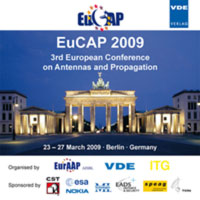Atmospheric water-vapour effects on spaceborne Interferometric SAR imaging: data synergy and comparison with ground-based measurements and meteorological model simulations at urban scale
Konferenz: EuCAP 2009 - 3rd European Conference on Antennas and Propagation
23.03.2009 - 27.03.2009 in Berlin, Germany
Tagungsband: EuCAP 2009
Seiten: 5Sprache: EnglischTyp: PDF
Persönliche VDE-Mitglieder erhalten auf diesen Artikel 10% Rabatt
Autoren:
Pierdicca, N.; Marzano, F. S. (DIE, Sapienza University of Rome, Roma, Italy)
Rocca, F.; Perissin, D. (DEI, Politechnic of Milan, Milano, Italy)
Basili, P.; Bonafoni, S.; Mattioli, V. (DIEI, University of Perugia, Perugia, Italy)
Cimini, D.; Ciotti, P.; Ferretti, R.; Montopoli, M.; Pichelli, E. (CETEMPS, University of L’Aquila, L’Aquila, Italy)
Foster, W.; Padmanabhan, S.; Reising, S.; Sahoo, S. (Colorado State University,CO, USA)
Notarpietro, R. (DIE, Politechnic of Turin, Torino, Italy)
Venuti, G. (DIIAR, Politechnic of Milan, Milano, Italy)
Inhalt:
Spaceborne Interferometric Synthetic Aperture Radar (InSAR) is a well established technique useful in many land applications, such as tectonic movements, landslide monitoring and digital elevation model extraction. One of its major limitations is the atmospheric effect, and in particular the high water vapour spatial and temporal variability which introduces an unknown delay in the signal propagation. On the other hand, these effects might be exploited, so as InSAR could become a tool for high-resolution water vapour mapping. This paper describes the approach and some preliminary results achieved in the framework of an ESA funded project devoted to the mitigation of the water vapour effects in InSAR applications. Although very preliminary, the acquired experimental data and their comparison give a first idea of what can be done to gather valuable information on water vapour, which play a fundamental role in weather prediction and radio propagation studies.


